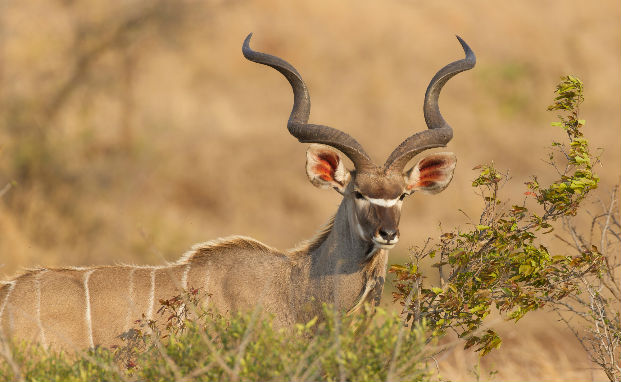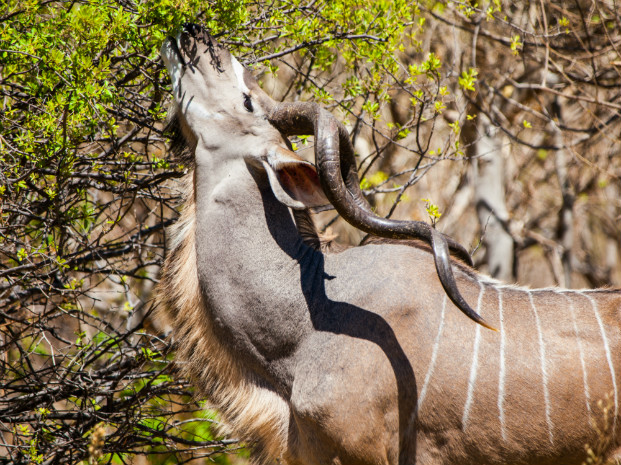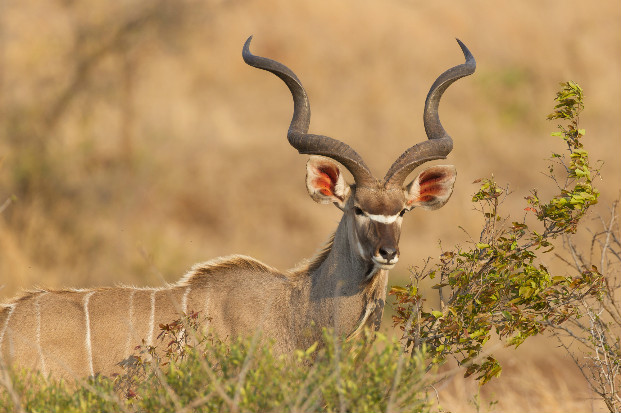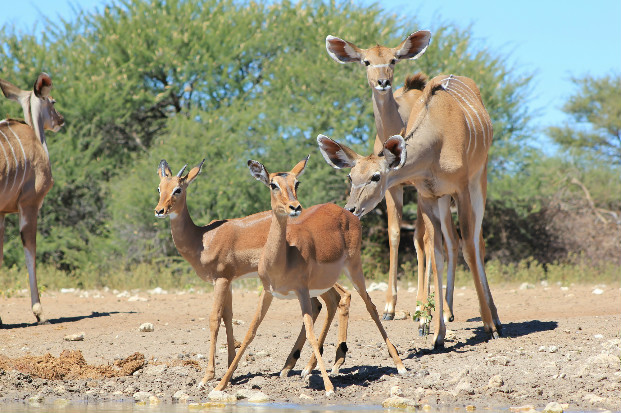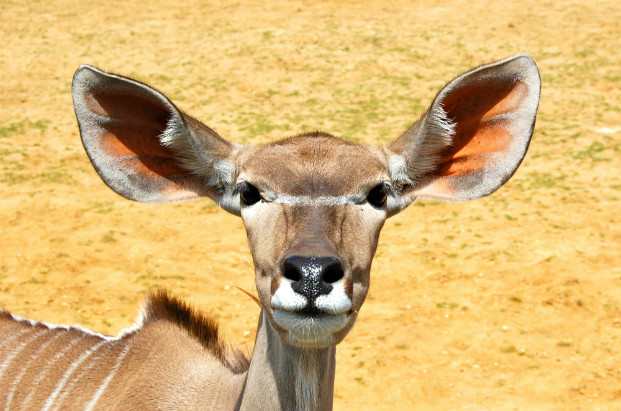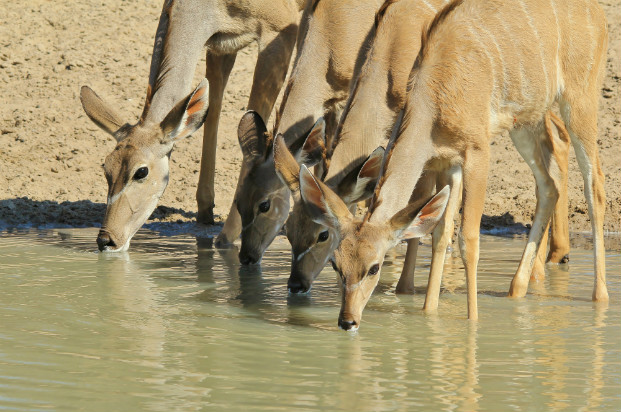Vote for the fact you find most fascinating
Whilst kudu bulls become sexually mature at three years old they can’t compete with the older males for access to the females until they are 6 to 8 years old.
Some plants, notably acacias, will increase the amount of bitter tasting tannin in their leaves. This happens within 15 minutes of an animal browsing, and as a result kudu have learnt to move onto the next plant after only a short time of feeding.
From a standing position the kudu can jump 2m high fences and when fleeing from danger they can clear obstacles as high as 3m.
The male kudu has the largest horns of any antelope. The record is 1.76m along the outer curve with the average being 1.19m.
If a kudu is spooked by a predator when it is in the open it will run for cover, turn so it can see the threat and then freeze which allows its camouflage to take effect.
Fighting may occur when two kudu bulls are equally matched. Fights would take the form of lunging, horn clashes and wrestling with locked horns. The latter may result in the death of both animals when their horns become locked together.
Kudus can point individual ears in different directions to help detect threats which may be nearby.
There are twice as many adult female kudus than there are males. This is due to greater predation of the bulls and deaths at the end of the breeding season caused by exhaustion, malnutrition and injury.

